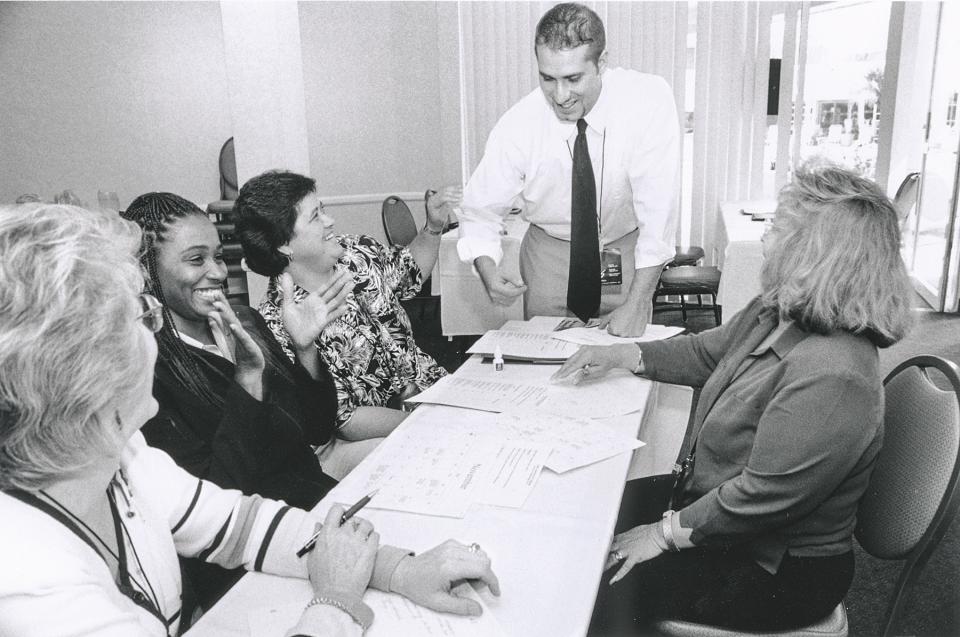Download a single-sheet illustrated history of the Council of Classified Employees
When the AFT in 1977 welcomed educational workers other than teachers into its ranks, paraprofessionals and classified employees became one of the fastest growing sectors of the national AFT. In the 1980s, several thousand California support staff voted for the AFT as their bargaining agent.
Reflecting the evolving nature of the CFT, the union created the Council of Classified Employees in 1982 so that its support staff members could participate fully in union governance.
Dissolving the artificial barriers between “bargainable issues” and other professional matters, the AFT and the CFT began to reframe the education discussion to include teachers and support staff as decision-making partners. The new unity between teachers and their co-workers greatly increased the power of both groups in the battles waged during the 1980s.
In its quest for professionalism, the union recognized that restructuring the classroom involves both teachers and paras, and that classified employees play a key role in student success. Through legislation and contract language, the union made sure all its members moved together towards change.
Barbara Kleinschmidt guided the Council of Classified Employees through its first decade. She was a clerk stenographer, and later instructional assistant, from the AFT College Guild in Los Angeles, where she helped write standards for staff participation in shared governance. As CCE president, Kleinschmidt advocated for staff in what had been an exclusively faculty union and established the CCE as a player in the CFT, the AFT and in California.
The division would undergo more change after Terry Elverum, a media production specialist from Cuesta College in San Luis Obispo, was elected president in 1995. A year later, the AFT/CFT launched the Classified Employee Organizing Project.
Working with Elverum, the project led by AFT staffer Margaret Shelleda, organized nearly 4,200 classified employees into the union. During this membership boom, 10 new AFT local unions were formed, with 19 bargaining units of classified employees voting to join new or existing AFT locals.
The CCE continues to increase the profile of classified employees in the union and at the worksite. Successful CFT legislation has given staff more voice on district governing bodies and representation on the Community College Board of Governors, and extended the layoff notice for classified employees to 45 days from 30.
Successful lobbying has led to CalPERS pension improvements, safer workplaces with doors that lock from the inside, pesticide use reporting on campus, auditing of technology use on campus, and financial support for staff to become credentialed teachers.
SNAPSHOT: CCE Presidents
1985 Barbara Kleinschmidt, AFT
College Guild
1995 Terry Elverum, Cuesta College
Classified United Employees
2001 Ernie Carson, Palomar Council of
Classified Employees
2005 Robert Chacanaca, Santa Cruz
Council of Classified Employees
2009 Velma J. Butler, AFT College
Staff Guild-Los Angeles
2013 Paula A. Phillips, Berkeley Council
of Classified Employees
2017 Luukia Smith, El Camino
Classified Employees
2019 Carl Williams, Lawndale
Federation of Classified Employees

